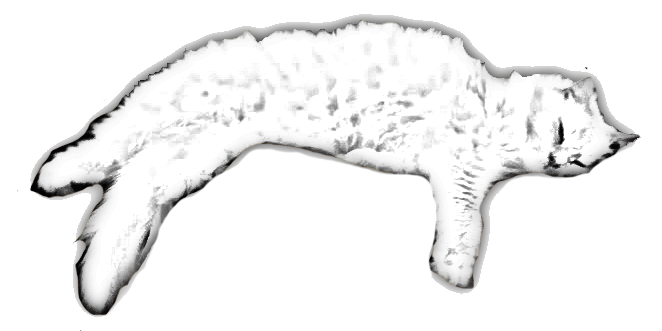Cuddly cats can quickly cross into concerning chubbiness, a common quandary for many pet parents like yourself. It's crucial to curb the calories and control their consumption to prevent your feline friend from falling into the trap of obesity.
As you assess your cat's current condition, consider the composition of their meals—both what's in them, and how much they're consuming. From the strategic selection of a species-appropriate diet to the fine-tuning of feeding frequencies, you're about to uncover how a few pivotal adjustments to your pet's eating habits can make a monumental difference in their health and happiness.
Stay tuned as we explore the optimal balance between diet and exercise that will not only slim down your cat but also support their overall well-being.
Assess Ideal Weight Ranges
How can you tell if your cat is at its ideal weight? Consulting with a veterinarian is essential to determine the weight range that's best for your pet, taking into account age, breed, and individual health needs. An accurate assessment is crucial as both overweight and underweight cats face increased risks of health problems.
Your vet will likely use a Body Condition Score (BCS), which is a clinical tool to help gauge whether your cat is underweight, at an ideal body weight, or overweight or obese. This scale evaluates the amount of fat at key areas of your cat's body and provides a numerical score, aiding in the assessment of your cat's weight status.
Understanding that obesity in cats can lead to serious health issues, such as diabetes and joint problems, is important. Conversely, sudden weight gain or loss can signal underlying health concerns. Regularly weighing your cat at home and monitoring for changes can alert you to potential issues early on.
Craft a Balanced Diet Plan
To prevent cat obesity, it's crucial to devise a diet plan that's tailored to your pet's specific needs, ensuring it includes the right balance of proteins, fats, and carbohydrates. Feline obesity can be averted by providing a diet that meets your cat's nutritional requirements without exceeding the necessary calorie intake. It's vital to select cat food that supports reaching and maintaining an ideal weight.
When crafting this diet, consider your cat's age, activity level, and current weight. Obese cats require fewer calories than their leaner counterparts. Therefore, the amount of food given should align with a weight loss or weight maintenance goal, as advised by a veterinarian. High-quality protein should be the cornerstone of the diet, as it's essential for maintaining lean muscle mass while reducing fat.
Consistent feeding routines also play a role in preventing weight gain. Measure the food to avoid overfeeding and divide the total daily calories into multiple small meals. This can help control hunger and prevent begging behaviors.
Implement Portion Control Strategies
Implementing portion control strategies is a key factor in managing your cat's weight and preventing obesity. To feed the overweight cat effectively, you'll need to serve fewer calories than it burns daily. This approach requires precision; hence, it's crucial to establish the correct portion sizes for feeding your cat.
One method to implement portion control strategies is by using an automatic feeder. These devices can dispense set amounts of food at scheduled times, reducing the risk of overfeeding. Additionally, feeding balls that dispense food as your cat plays can encourage physical activity while controlling the amount of calories consumed.
Dividing the daily calorie intake into small meals can also prevent cat obesity. Small, frequent feedings mimic natural feeding patterns and may aid in metabolism regulation. When you implement portion control strategies, you're not only managing the quantity but also the calorie density of the food. Selecting a diet with fewer calories per serving is essential.
Incorporate Dietary Variety
Incorporating a variety of proteins, textures, and flavors into your cat's diet can enhance nutritional balance and mealtime enjoyment. Offering a mix of different protein sources is crucial to providing balanced nutrition that meets your cat's daily needs. The food you feed your cat should cater to their nutritional requirements while also keeping mealtime interesting.
Including a variety of textures such as pate, chunks, or shreds can help maintain your cat's interest in their meals and encourage them to eat. Dry food is a common staple, but it's essential to rotate different flavors to prevent meal fatigue. This ensures your cat receives a range of nutrients and can promote weight management by reducing the risk of overfeeding due to boredom.
Introducing occasional small amounts of safe fruits and vegetables can add a new dimension to your cat's diet and contribute to their overall nutritional intake. Additionally, incorporating canned food meals can diversify your cat's diet and significantly increase their moisture intake, which is vital for their health.
When transitioning to a new diet, it's important to do so gradually to avoid digestive upset. By offering a varied diet, you can help maintain your cat's ideal weight and meet their nutritional needs, ultimately contributing to a healthy weight and lifestyle.
Conclusion
In conclusion, you'll ensure your cat's health by keeping its weight in check. Aim for the ideal weight range, provide a balanced diet, and be strict with portion sizes.
Don't forget to mix up their meals to maintain interest and nutritional balance. Regular weight checks and adjustments are crucial. Remember, a gradual approach is safest; always work alongside your vet.
Your commitment is key to preventing obesity and promoting a lively, healthy life for your feline friend.




0 Comments